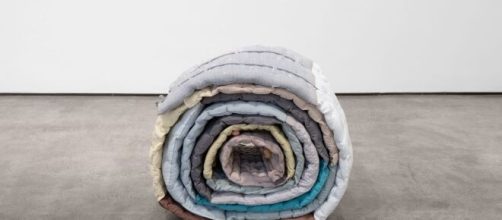Do you ever have the sickening sensation of the art world plummeting into the sea? I do. Each year, I expect to mourn the drowning.
No, I’m not bewitched, but I am bothered and bewildered (apologies to Rogers and Hart) by this year’s Turner Prize. And I’m not the only one scratching my head.
“Perplexing” is the word used by The Weekly: “This is a prize that never seems to make sense anymore.” Did it ever? (More about that in a moment).
“Baffling” is the word used by The Observer art critic Laura Cumming. The Turner Prize, she says, has been awarded sometimes to "bafflingly overpromoted, dull or indifferent art."
Conflict of interest
But something downright jaw-dropping marks this year’s award, and it’s not the artmaking.
While judges for the competition have always been impartial, Cumming reports that this time three of the six judges have professional relationships with the artists by running the galleries that represent them.
You heard that right. Fully half of the art experts evaluating Turner Prize entries this year have a stake in the outcome.
Isn’t that like finding out that Pulitzer Prize winners are picked by their publishers or that Academy Awardees are chosen by their producers?
While I’m asking questions here, why are all the Turner Prize finalists female? How can it be that not a single male made the cut? Cumming seems to suggest a possible answer when she said: “The Turner prize never makes any sense.”
Named after the English Romantic painter J.M.W.
Turner, the prize has been a yearly award for British artists for the last 38 years. It’s considered the UK’s most coveted art award.
You may remember some past winners. In 1995 there was Damien Hirst for a work he called “Mother and Child Divided.”
What you saw was a glass-walled tank holding two halves of a cow and a calf. Each split in half, floating in formaldehyde to preserve them.
Then there was the 1999 Turner Prize for “My Bed” by Tracey Emin. What you saw was the artist’s actual bed, complete with disheveled, semen-stained sheets.
Whatever you thought of them, at least the works of Hirst and Emin were visual. In 2019, Lawrence Abu Hamdan, an artist shortlisted for the Turner Prize, entered a work meant for listening, not looking.
The BBC noted that Hamdan "thinks of himself as an 'audio investigator'" – an "earwitness" rather than an "eyewitness."
Mind you, we’re talking about an award given in the name of a painter of atmospheric landscapes and seascapes. Nothing auditory about them, unless you count his storm scenes that are so persuasive, you imagine hearing the wind.
This year’s Turner Prize winner is sculptor Veronica Ryan. Not having viewed her work at Tate Liverpool, I won’t speak to it.
But looking at one of the photos on hand of Ryan’s work called “Encounter Sleep,” which amounts to rolled-up packing blankets, Emin’s “My Bed” pops to mind, leaving me wonder if these Brits need to get out more.
What were you thinking
Tate Britain director Alex Farquharson, who co-chairs the Turner Prize’s jury, has a lot to answer for when it comes to picking credible judges.
As for Ryan’s win, Farquharson told the New York Times that her entry is “the quietest and slowest burn” of any recent winner of the prize.
Is that good? I don’t know. I’m doing a slow burn of my own thinking about his choice of jurors.


